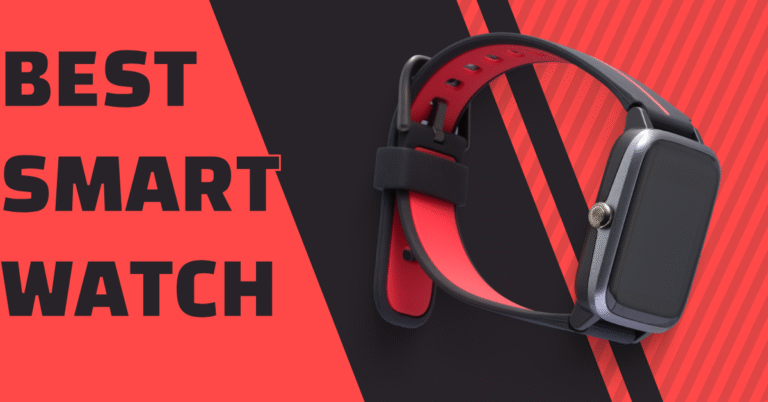With so many smartwatches on the market, picking the right one can feel overwhelming. Whether you’re a fitness buff, a busy professional, or someone who just wants to stay connected without constantly checking their phone, there’s a smartwatch out there for you. But how do you choose the one that fits your needs? This guide breaks down the key factors to consider, so you can make an informed decision without the guesswork.
Table of Contents
1. Define Your Primary Use
Before diving into specs or brands, ask yourself: What do I need this smartwatch for? Your answer will narrow down your options. Here are some common use cases and what to look for:
- Fitness Tracking: If you’re into running, swimming, or yoga, prioritize watches with advanced health features like heart rate monitoring, GPS, sleep tracking, or SpO2 sensors. Look for water resistance (at least 5 ATM) for swimming.
- Productivity: Need to manage emails, calls, or calendar alerts? Choose a smartwatch with strong app integration, voice assistants, and notification support for your smartphone’s operating system.
- Style and Everyday Use: If you want a sleek accessory that doubles as a watch, focus on design, customizable watch faces, and battery life for all-day wear.
- Health Monitoring: For those tracking medical conditions, look for features like ECG, blood pressure monitoring, or fall detection, which are available on some premium models.
Pro Tip: Make a shortlist of must-have features to avoid getting distracted by flashy extras you won’t use.
2. Check Compatibility with Your Phone

Not all smartwatches play nice with every smartphone. Compatibility is crucial for seamless notifications, app syncing, and updates. Here’s the breakdown:
- iPhone Users: Apple Watches (like the Series 10 or SE) are your best bet for full functionality, as they integrate tightly with iOS. Some Android-compatible watches, like certain Fitbit or Garmin models, work with iPhones but may have limited features.
- Android Users: You have more flexibility with brands like Samsung (Galaxy Watch series), Google (Pixel Watch), or Fitbit. Check if the watch supports your specific Android version and apps.
- Cross-Platform Needs: If you switch between iOS and Android or want a watch for basic use, consider brands like Fitbit or Garmin, which offer broader compatibility.
Quick Tip: Check the manufacturer’s website for a list of supported devices to avoid surprises.
3. Focus on Battery Life
Nothing’s worse than a smartwatch that dies midday. Battery life varies widely depending on the model and features:
- Basic Models: Budget options like the Fitbit Versa 4 or Amazfit Bip 5 can last 5–7 days on a single charge.
- Premium Models: High-end watches like the Apple Watch Ultra 2 or Samsung Galaxy Watch 7 typically last 1–2 days due to power-hungry features like always-on displays.
- Fitness-Focused Watches: Garmin’s sports watches, like the Forerunner 265, often last up to 10–14 days, ideal for athletes who need reliability.
Pro Tip: If you hate frequent charging, prioritize watches with at least 3–5 days of battery life or opt for models with fast-charging capabilities.
4. Consider Design and Comfort
A smartwatch is something you’ll wear daily, so it needs to look good and feel comfortable. Here’s what to keep in mind:
- Size and Fit: Check the case size (e.g., 40mm vs. 45mm) and strap options. Larger watches may feel bulky on smaller wrists.
- Style: Some watches, like the Apple Watch or Samsung Galaxy Watch, offer premium materials (stainless steel, titanium) and customizable bands. Others, like Garmin, lean toward sporty designs.
- Display: Look for AMOLED displays for vibrant colors and better visibility outdoors. Ensure the screen is protected with durable glass (like Gorilla Glass or sapphire).
Quick Tip: Try on a display model in-store if possible to ensure it feels right on your wrist.
5. Set a Budget

Smartwatches range from budget-friendly to luxury price tags. Here’s a rough guide:
- Under $100: Basic models like the Amazfit Bip or Xiaomi Smart Band offer fitness tracking and notifications but lack advanced features.
- $100–$300: Mid-range options like the Fitbit Charge 6 or Samsung Galaxy Watch FE provide a good balance of features and affordability.
- $300 and Up: Premium watches like the Apple Watch Series 10, Garmin Venu 3, or Samsung Galaxy Watch Ultra offer cutting-edge health sensors, sleek designs, and robust app ecosystems.
Pro Tip: Look for deals during major sales (e.g., Black Friday) or consider older models, which often have similar features at a lower price.
6. Don’t Ignore Software and Updates
A smartwatch is only as good as its software. Check how often the manufacturer releases updates and whether the watch supports third-party apps:
- Apple Watch: WatchOS is intuitive and gets regular updates, with a wide app selection.
- Samsung Galaxy Watch: Runs Wear OS, offering Google Play Store access and frequent updates.
- Garmin/Fitbit: Focus on fitness with proprietary software, but app ecosystems are limited compared to Apple or Samsung.
Quick Tip: Read user reviews to see how reliable the software is and whether updates improve performance over time.
7. Compare Key Features
To help you decide, here’s a quick comparison of best smartwatch 2025 based on common user needs:
| Smartwatch | Best For | Battery Life | Key Features | Price Range |
|---|---|---|---|---|
| Apple Watch Series 10 | iPhone users, style | 1–2 days | ECG, SpO2, customizable faces | $400–$500 |
| Samsung Galaxy Watch 7 | Android users, productivity | 1–2 days | Wear OS, blood pressure monitoring | $300–$400 |
| Garmin Forerunner 265 | Fitness enthusiasts | 7–13 days | Advanced GPS, training metrics | $350–$450 |
| Fitbit Versa 4 | Budget-friendly fitness | 5–6 days | Sleep tracking, heart rate | $150–$200 |
| Amazfit Bip 5 | Budget, long battery life | 10–14 days | Basic fitness tracking, notifications | $80–$100 |
Final Thoughts on Best smartwatch 2025
Choosing the best smartwatch comes down to understanding your needs, checking compatibility, and balancing features with budget. Whether you’re tracking your morning run, staying on top of emails, or just want a stylish accessory, there’s a smartwatch out there for you. Start by listing your must-have features, then compare models within your price range. Still unsure? Drop your questions in the comments, and we’ll help you find the perfect fit!
You might be interested in Following articles
Vibe Coding Showdown: Copilot vs Gemini Which AI Syncs with Your Flow?

